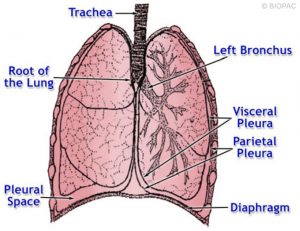New Citations | Breath of Life
 With new developments happening daily, it’s easy to forget to slow down and take a breath. Breathing can be as forgettable as it is crucial; the often forgettable automatic function inspires rituals in religions around the world. Studies have shown the importance of breathing not just in a spiritual sense but also in physiological health benefits. Lung functionality is a critical focus for research, inspiring exploration into different areas of thought. The following represent studies in understanding how lungs function, how they sustain against damage, and how they might be replicated.
With new developments happening daily, it’s easy to forget to slow down and take a breath. Breathing can be as forgettable as it is crucial; the often forgettable automatic function inspires rituals in religions around the world. Studies have shown the importance of breathing not just in a spiritual sense but also in physiological health benefits. Lung functionality is a critical focus for research, inspiring exploration into different areas of thought. The following represent studies in understanding how lungs function, how they sustain against damage, and how they might be replicated.
Unilateral lung disease often causes unequal functioning between lungs. Researchers investigated how transfer entropy (TE) and mutual information (MI) within the lungs influence unequal functioning. BIOPAC’s MP research solution and EBI100C amplifier measured the respiration of twenty-one male participants. Researchers adjusted participant’s posture to create an uneven amount of work between each lung. The findings contributed to parameters for analyzing MI and TE in respiration for possible usage in identifying asymmetric lung functionality in a clinical context.
Recognizing the increase of anthropogenic air pollution in the world raises the question of how it interacts with the lungs. Researchers investigated index 2.5 of industrial air pollution known as particle matter 2.5 (PM 2.5), a substance made of hydrocarbons, particles of organic compounds, and heavy metals. Observing PM 2.5s interaction with a protective enzyme inside the lung (ACE2), Biopac Student Lab was used to analyze the RRR data in mice before and after exposure to the substance in a laboratory setting. Though PM 2.5 was found as causing acute lung injury, presence of ACE2 helped heal the lungs faster after exposure.
Researchers at the University of Brussels developed a synthetic lung for the purpose of simulating a humans breathing system. Putting it to the test, researchers wanted the mechanical replica to reproduce breathing patterns and even coughing. Modeling after humans, live participants in their lab were measured with BIOPAC’s TSD137H flow meter, tracking exhausted breath in breath volume, flow rate magnitude, and duration. Though unable to replicate a cough, they believe that their success in the design and functionality of the device paves the way for robotic advancements in healthcare.
Stay Connected